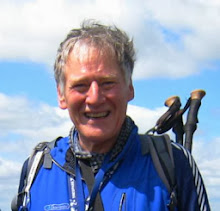For one of my walk postings, one person had taken issue with my incorrect spelling of a place name ("Carlin Howe") - which I should have spelled (correctly) as "Carlin How" (without a terminal 'e').
Here is the entry concerned.
Of course, my correspondent was perfectly correct. Within the geographical area concerned, there are indeed two places with very similar spellings - separated from each other by a distance of about 6 miles ('as the crow flies'!). Carlin Howe {NZ 608 181} lies roughly due west of Carlin How {NZ 707 192} - as shown in the following diagram. The items in parentheses following these place names are grid references - as discussed below.

My correspondent was therefore concerned that people reading my walk description would start their walking expedition in the wrong place. I disagreed with him, on the basis that words and names are usually so imprecise that they cannot be relied upon to identify, in an accurate way, the correct location where a walk actually starts. Instead, this information is given by means of a grid reference - using either a national or an international method of specifying geographical locations. In my postings to the rambling club blog, I use the UK's national grid system - alternatively, a latitude and longitude specification would do equally well.
So, although I had spelled the place-name for the start of the walk incorrectly, because there was not an error in the grid reference, there should not be a problem.
Addendum
Interestingly, I checked out the spelling of the place-names discussed above on the UK's Ordnance Survey Web site and found that the spelling of the place-name of the location at grid reference NZ 608 181 actually changes - depending upon the scale of the map used. As can be seen in the following diagram, the 1:50000 map uses Carlin Howe while the 1:25000 scale map adds an extra letter 'g' - making it Carling Howe!

I thought this was quite remarkable since it appears that through the 'magic' of computers, it seems possible to make the spelling of a place-name change by means of a simple mouse-button click. The above spelling anomaly is also echoed in the 'paper' versions of the maps for this area.

No comments:
Post a Comment